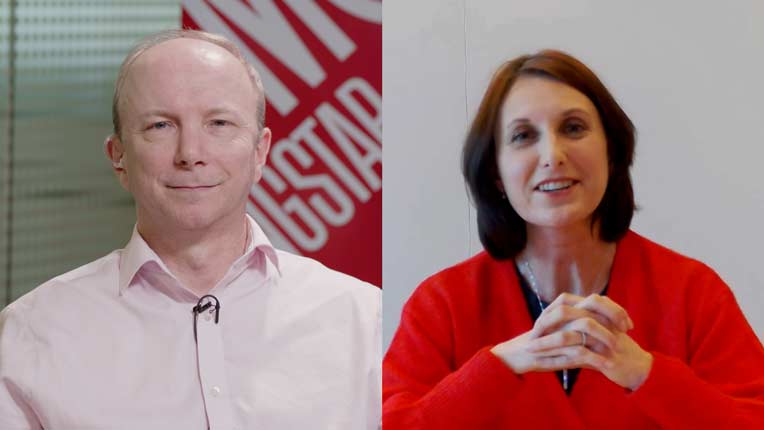
Nearly 30% of the world’s bonds ($16 trillion) are offering a negative yield and recent movements in parts of the fixed income markets have been highly volatile. German investors are now putting cash in secure warehouses, while Danish bank Jyske announced this month it would lend to homebuyers at an interest rate of -0.5%.
In theory, multi-asset fund managers should be able to navigate this challenging backdrop. These funds have the freedom to invest across all types of assets including equities and bonds, property and cash.
UK and US bonds are still in positive territory, yielding 64 basis points and 1.735% respectively, but fund managers have abandoned Eurozone bonds and are delving into credit, particularly in emerging markets, and alternatives to fill the gaps.
Joseph Little of HSBC Global Asset Management, is looking to include emerging markets to diversify their multi asset funds and currently favours Asian high-yield bonds.
Moves into credit have been highly selective, as managers are every bit as concerned about economic growth as they were coming into the year. “The default cycle has, as yet, failed to materialise for arguably unhealthy reasons, such as covenant light lending and artificially low interest rates so the survival of the fittest in the corporate world has been dragged out into a marathon rather than sprint,” says Kelly Prior, investment manager in BMO’s multi-manager team. “Those who fail to reach the finishing line will see little recovery value from their investments, it has been said, as there is so little protection in capital structures now.”
Shorter Duration
Many managers, reluctant to pay a high price for the insurance properties of duration, are instead focussing on shorter term duration in rates and credits.
David Jane, manager of the Miton multi-asset fund range, has been trimming longer dated government bonds and growth equity positions, while increasing positions in real estate investment trusts (REITs). He likes Japanese REITs as the Yen is still a safe haven currency and tends to rise when the equity market goes down.
Indeed, foreign purchases of Japanese government bonds doubled in the summer months. Some dollar-based bond managers, such as BNY Mellon and Pacific Investment Management, have made the country one of the top weightings in their global fixed income funds, despite the negative yields, because they can stoke returns by hedging their currency exposure.
Meanwhile, Nathan Sweeney, co-manager of the Architas Multi-Asset Active Fund range, has boosted high yield via the Barings Global High Yield fund, which is yielding 4%, and reduced exposure to minvol strategies in emerging markets, substituting it with the RWC Income Opportunities fund. Sweeney has also joined the inevitable rotation from growth to value in equities. Although he believes good earnings from growth companies will fly in the face of expectations, he has reduced exposure to the AB American Growth fund and bought into the Robeco US Premium Fund, which has a Silver rating from Morningstar.
Real Assets
A shift from growth to high dividend stocks could also follow any further central bank decisions to reduce rates. In such a climate, the attractions of real assets such as operational infrastructure and aviation financing are obvious.
Paul Flood, multi-asset portfolio manager at Newton Investment Management, has been increasing exposure to renewable energy, extending the fund’s portfolio to include US and European assets which have adopted a more conservative business model than previously.
“Operational renewable energy assets have fixed, inflation-linked revenues representing up to 50% of these businesses’ overall earnings, with power prices making up the rest, meaning their sensitivity to the economic cycle is very limited,” he explains.
“Just five years ago, renewables were a nascent market, and investors continue to question the ability to access scale. However, to decarbonise the world’s power generation will require up to $50 trillion of capital over the next 30 years, according to Bloomberg, which in our view should provide support for the asset class as companies compete for access to that capital.”
Clearly demand for such assets is strong; Sanlam Investments is launching two alternative funds in November, which focus on private markets. “More and more capital allocators are looking at alternatives as an asset class in portfolio construction decisions,” says Pawan Singh, head of multi-strategy at Sanlam. “It is analogous with passive investing, which a decade ago was not liked as the markets were generating good alpha for stockpickers. We strongly believe this trend is now here to stay. Going forward we see capital allocators incorporating passive, active and alternatives in their investment decision-making framework.”
The firm has tried to build a high predictability factor into the portfolio’s return generation, with allocations to a direct lending fund, an impact-themed fund, a pan-Africa direct lending fund that incorporates financial inclusion, a real estate fund and a blend of hedge funds that focus on absolute return.
One of the funds will be a standalone diversified alternative portfolio; the other will constitute 15% of a retirement fund with the other 85% investing in index trackers - the result, says Singh, is a portfolio where investors get cheap access to market beta and pay for alpha on alternatives.



























